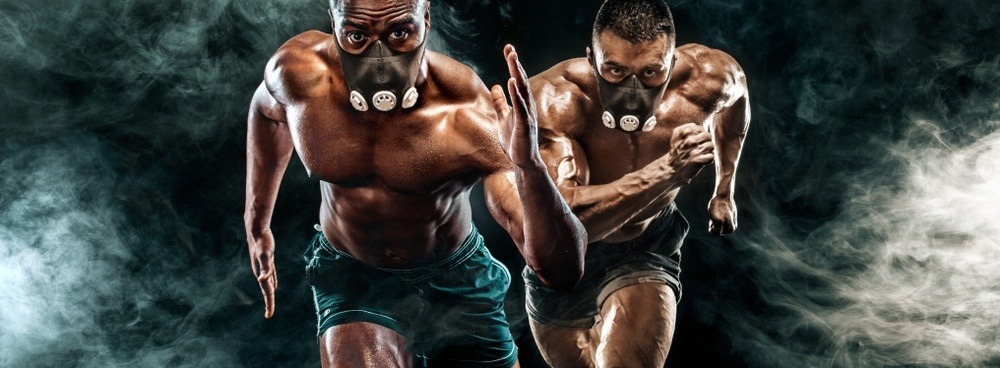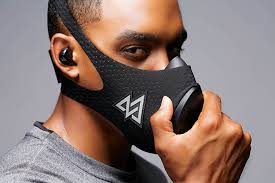High altitude training improves athletic abilities. Famous MMA athletes, boxers, and other combat sports royalty enjoy training opportunities that are out of reach to most aspiring participants.
One such advantage is an extended stay at lavishly equipped mountain lodges in high altitude training camps. Amenity rich destinations like California’s Big Bear region, or Team USA Olympic Training facilities in Colorado Springs host elite competitors year-round.

They exceed 6,000 feet in altitude, which trainers and medical studies have found as the ideal elevation to impact training favorably. It helps improve blood oxygenation and stamina training. Positive physical effects upon athletes training at high altitudes were confirmed since the 1960s.
In recent years, altitude masks have gained favor as a more accessible and cheaper alternative, but do they deliver on their promise?
The expectation of altitude masks is to provide the benefits of elevation training without leaving your home or training facility. These product-based alternatives to altitude training, along with hyperbaric chambers, are making altitude training accessible for many more people.
Technological Advances Enhances Performance
Hypoxico, for instance, installed a 500 square foot Altitude Chamber in the High-performance Center at UFC’s Las Vegas headquarters. This shift to alternative altitude gear will not be lost on fans watching various all-access shows for significant boxing events, where some combatants are filmed with training masks to maximize workouts at lower elevations.
Some claims by altitude training mask manufacturers have a common sense merit. Respiratory muscles are muscles, so more intensive exercise of that muscle system should produce a facsimile of the benefits which working at altitude does.
The overarching question is if the act of restricting airflow during workouts provides similar advantages to a six-week training camp in the mountains?
What Masks Can't Do
Unless a person lives in a hypobaric chamber, which maintains consistent air pressure, there is no way to emulate the continual lack of oxygen and pressure imposed by higher elevations. Lower barometric pressure appears to be the essential element to elevation training. Maks cannot replicate it.
Colder temperatures and lower humidity value are driving factors, as well. They lead to increased Erythropoietin (EPO) levels, which stimulates a person's red blood cell count. Vitally, an increased red blood cell count maximizes a person’s ability to carry oxygen to muscles.

Source: isportsweb.com
Nor do masks create an improved peak oxygen uptake or “VO2 max”, which increases our ability to transfer oxygen to the red blood cells.
These positives are gained gradually at altitude. Generally, it takes between seven and ten days for the body to properly acclimatize to new environmental demands with the most benefit of elevation training found in the third and fourth weeks. Peak fitness comes in the five to seven-week range, which is why most camps are 6-week stays.
On the down side, some studies suggest elevation stays in excess of ten weeks can have adverse side effects for athletes who rely more on muscular strength. After 70 days, minor muscle loss happens in exchange for aerobic fitness. Which may be counterproductive for practitioners of fighting arts.
What Masks Can Do
Elevation masks are more than a clever marketing gimmick for a portion of the athletic community. Samoa’s distinguished National Rugby Team makes use of them, and famous athletes like Mike Tyson to Marshawn Lynch espouse their worth. They make appearances in boxing movies like ‘Creed’ and ‘Southpaw.’
The masks employ three valves, one intake valve on each side, and one exit valve in the center. They manage the quantity of air that travels through the mask.
Using intake cap fittings, the athlete adjusts the air resistance level to an alleged approximation of 18,000 feet. This forces the wearer to inhale deeper and use oxygen more sparingly or efficiently.
Thus, the mask produces a strain on the respiratory muscles, which strengthens them and enhances endurance.
Manufacturer brochures claim their masks, ‘help condition the lungs by creating pulmonary resistance and strengthening the diaphragm.’ Additionally, ‘Your workouts will decrease the impact of fatigue in your training sessions by increasing your threshold potential, activity strength at exhaustion and stamina.’
Few refute the masks create a heightened work out for respiratory muscles, with the focus primarily on the body’s intercostal area and diaphragm. But, some bolder industry claims have no scientific backing by university or sport institute studies.
These masks may help in one undervalued area of the MMA athlete's body: the brain. Using a mask may provide a psychological edge that cannot be measured.
The wearer believes he has pushed his physical boundaries, by making it harder to breathe, which his foe has likely neglected without the aid of a mask. That alone may be worth the investment for competitive athletes, as most masks retail at a reasonable cost between $50 and $100.
Do High Altitude Masks Work?
Overall, a majority of reviewers and scientists believe the benefits of oxygen masks are negligible. The difference between what happens at high altitudes (changes in the pressure of oxygen, temperatures, humidity, ultra-violet exposure) and wearing a mask making it harder to breathe is significant.
The masks cannot affect physical changes in the body like living at altitude. Masks only reduce the intake of air and do not generate lower oxygen concentrations in the air, which you inhale. A negative side effect is a dangerous re-intake of carbon dioxide from within the cone shaped dead space of the mask.
The most apparent challenge masks face in combat sports is you cannot wear them during sparring sessions, where MMA fighters and boxers would gain the most benefits.
At this time, scientific evidence does not support the altitude mask industry’s claims of extravagant benefits, but does show minor respiratory gains. It may not be of high enough worth for most MMA fighters or boxers.
For those that will never be an MMA Fighter or Boxer, but are interested in training to improve cardiovascular conditioning the nominal cost of between $50 to $100 is a reasonable expense given the cost of a monthly dojo fee.
What is the Best High Altitude Training Mask?
Two Altitude Masks Worth Considering
1.) Elevation Training Mask 3.0
Pros
Cons
2.) Phantom Athletics Workout Training Mask
Pros
Cons
Conclusion:
The winner is... ELEVATION TRAINING MASK 3.0. All elevation masks work on one concept; making them difficult to distinguish on the basis of science.
Thus, it comes down to the quality of material used in the manufacturing process, fit, ease of operation, and style. Elevation Training pioneered altitude masks, and show no signs of letting the lead they have established slip away through shortcuts in production or design.
